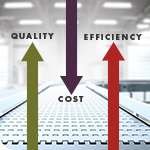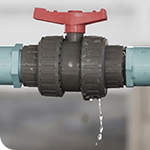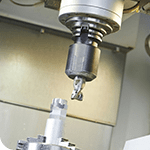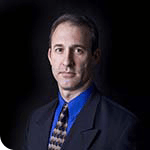Set Up an Effective Greenhouse Gas Monitoring Plan
In this month’s issue of Chemical Processing, SSOE Group’s Anna Koperczak, Senior Environmental Specialist, discusses the upcoming deadline mandated by the U.S. EPA. In this article Koperczak also breaks down the components of a successful monitoring plan necessary to fulfill this federal regulation. Click the link below to read Anna’s article in Chemical Processing magazine. “Set Up An Effective Greenhouse Gas Monitoring Plan”
Our Senior Environmental Specialist, Anna Koperczak, gives expert advice on how to set up a GHG monitoring plan. Anna has more than 20 years experience preparing environmental permits and helping clients comply with environmental regulations for their facilities and processes. She has utilized her extensive knowledge of reporting and permitting requirements for a variety of clients, including those in the automotive, energy, food, chemical, steel, and refining industries.
View the Q&A below
Federal Greenhouse Gas (GHG) Tailoring Rule
|
Download the complete chart
|
| What is it? |
In May 2010, the EPA issued a final ruling to increase the major source thresholds for GHGs from
100/250 TPY to 25,000 TPY, effectively “tailoring” the PSD and Title V permit programs to target only “major” GHG sources and major modifications. GHG’s include CO2, N2O, CH4, HFCs, PFCs, and SF6. |
| Why does it exist? |
To phase in permitting requirements and reduce the number of applications submitted at one time. |
| Who does it affect? |
All facilities applying for, renewing, or revising an air quality permit; or facilities that increase their GHG emissions by 75,000 TPY. |
| What’s required? |
Phase 1:Permits Issued Jan. 2, 2011 – June 30, 2011
- PSD permit: new construction projects or modifications that increase GHG to more than 75,000 TPY are required to conduct a Best Available Control Technology (BACT) analysis.
- Title V permits: only when applying for a new, renewing, or revising a permit.
Phase 2: Permits Issued July 1, 2011 – June 30, 2013
- PSD permit: new construction projects that emit GHG emissions of at least 100,000 TPY, and modifications to existing facilities that increase GHG emissions by at least 75,000 TPY.
- Title V permit: facilities that emit at least 100,000 TPY
|
| How does SSOE help? |
- Help clients understand the permit requirements and how they apply to them.
- Complete / coordinate permit applications and help revise processes and/or building plans to meet guidelines.
|
| How does SSOE add value? |
SSOE applies its broad knowledge of industrial processes and facilities and full range of services to identify emissions issues before permits are submitted for review. |
Mandatory GHG Reporting Rule
|
Download the complete chart |
| What is it? |
In October 2009, the EPA issued the “Mandatory Reporting of GHGs Rule” that requires industrial facilities to report their GHG data and other relevant information. The Rule is referred to as 40 CFR 98 (or Part 98 Rule).The gases reported include CO2, N2O,and CH4. |
| Why does it exist? |
To gain accurate and timely GHG data that will inform future decisions. |
| Who does it affect? |
Facilities that emit 25,000 TPY of GHGs, and any of the following facility types:
- Adipic acid production
- Aluminum production
- Ammonia production
- Certain electricity generation
- Certain manure management systems
- Certain municipal solid waste landfills
- HCFC-22 production
- Certain HFC-23 destruction processes
- Lime manufacturing
- Nitric acid production
- Petrochemical production
- Phosphoric acid production
- Silicon carbide production
- Soda ash production
- Titanium dioxide production
|
| What’s required? |
Facilities that exceed thresholds are required to submit annual reports to the EPA. |
| How does SSOE help? |
- Help clients understand and interpret industry-specific requirements.
- Identify processes and sources that emit GHGs.
- Help create and implement an effective GHG monitoring plan.
- Identify areas and strategies to decrease GHG emissions and increase efficiency.
|
| How does SSOE add value? |
- Alleviate the cost and time of internal resources.
- Experienced specialists know what data needs to be collected and calculations performed, as well as how to organize the reports to meet the EPA’s criteria.
- Full range of services allow us to help implement components of GHG monitoring plan (i.e. integrate meters and controls systems).
|
Boiler MACT Rule –Major Sources
|
Download the complete chart |
| What is it? |
In February 2011, the EPA issued new regulations regarding the emissions of hazardous air pollutants (HAPs) from industrial, commercial, and institutional boilers. |
| Why does it exist? |
To regulate the emissions of HAPs, such as HCl, particulate matter, CO, mercury, and dioxins/furans from major sources of HAPs. |
| Who does it affect? |
Facilities with boilers that emit at least 10 TPY of any single HAP and/or at least emit 25 TPY of all HAPs. The rule covers new, reconstructed, and existing boilers. |
| What’s required? |
- All units with heat inputs less than 10 MMBTU/H are required to have biennial tune-ups.
- Natural gas fired units with heat input equal to or greater than 10 MMBTU/H are required to have annual tune-ups.
- All facilities are required to have a one-time energy assessment.
- All facilities are required to be in compliance within three years of publication of the rules (February 2014).
- Emissions limits for coal, biogas, and other fuel burning equipment.
|
| How does SSOE help? |
- Help clients understand and interpret specific requirements.
- Perform required energy assessments / boiler studies.
- Identify areas and strategies to increase efficiency.
- Help create a plan to update equipment / processes, and provide engineering and design support.
|
| How does SSOE add value? |
Experience with various industrial boilers and comprehensive services, qualifies SSOE to identify cause and effect of emissions throughout both facilities and processes and provide integrated solutions. |

Q: We need to develop a reliable monitoring plan to measure the level of greenhouse gas emissions in our facility. How do we get started?
A: To begin, you’ll need to identify the sources of GHG emissions in your facility. The obvious places to consider are any combustion sources, boilers and heaters for example, or the actual production of GHGs. Also look at any chemical reactions that emit GHGs.
Q: Once I know all the sources of emissions, how do I measure them? Are meters the best way?
A: Not necessarily. There are various ways to measure GHGs and you’ll want to determine the most efficient and accurate way for your circumstances. Meters are a common solution. Make sure you use the appropriate meter for the equipment. Consider too that you may already have some metering in place that can be used to measure GHGs. You can use a PLC to gather the information from the meters. Make sure to include the calibration of equipment in your step by step monitoring plan.
Measuring the amount of fuel a piece of equipment uses is another way to calculate the amount of GHGs it emits. Also, the throughput of a piece of equipment can also help you calculate the GHG level.
Another viable option for gathering information is to examine past utility bills and use the reports to determine emission levels over a period of time.
Q: How often do I need to gather information to satisfy the reporting and permitting regulations?
A: You will want to collect your data at a minimum monthly. That way you can see trends in emissions if there are issues.
Q: How long does it typically take to develop and implement a monitoring plan?
A: That depends somewhat on the size of the facility(s). I estimate three to four months for identifying the sources, establishing the best monitoring approach, calibrating equipment, and collecting data.
Q: What are my options for reducing GHG emission levels?
A: You have many options for reducing levels. Among them are converting from coal-fired to natural gas boilers, configuring your process to use fewer, larger boilers (or more small ones), updating older equipment, upgrading processes, recovering waste heat, and installing various types of equipment that reduce emission levels.
We help clients compare these solutions, taking into account the cost of equipment, labor, and maintenance, as well as the results they generate.
Q: When does it make sense to use an outside resource to handle these activities?
A: I think you first have to consider if you have the internal resources to keep abreast of the changing regulations as opposed to an outside resource whose job it is to do so. It is valuable to have the person filing reports know how the EPA wants the information structured and how to compile it efficiently. That comes with experience.
Since understanding current regulations, reporting, monitoring, and permitting require special skills, many companies prefer to use an outside expert rather than increase headcount. Another approach is to use an outside resource to train your staff to do some of the activities—calibrating the monitors and collecting data for example.
Q: What can we expect as next steps from the EPA in regards to reporting and controlling GHG levels?
A: There is little doubt that the EPA intends to eventually mandate that companies reduce their emissions to meet certain levels, regardless of whether they are seeking permits. As part of this, the emission levels of companies will become public knowledge.
Q: How would you advise companies to prepare for public disclosure of their GHG levels?
A: I’m advising our clients to consider how public knowledge of their emissions levels will impact all aspects of their business, the public’s perception of their environmental policies, their relationships with partners and vendors, and perhaps sales. Companies should start now to reduce their levels and see this as an opportunity to gain recognition as an environmental leader.













